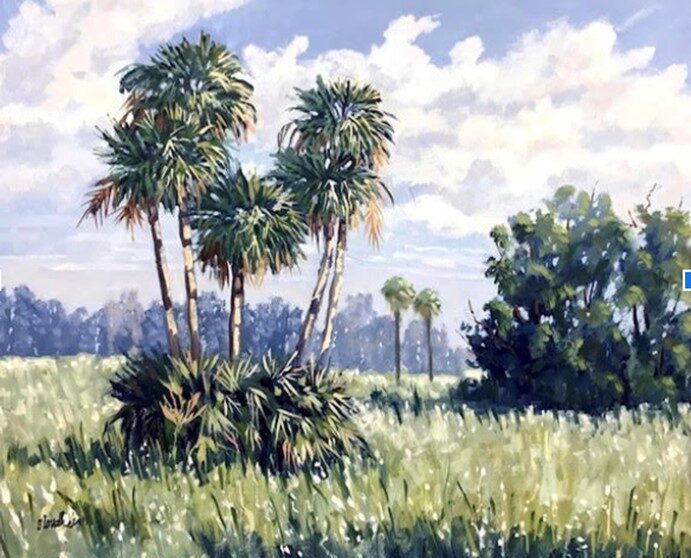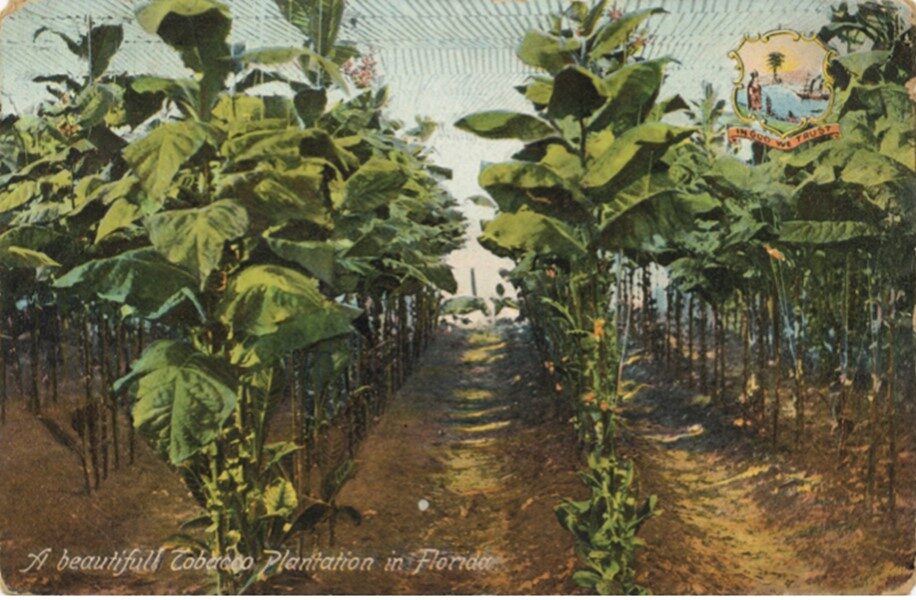By Mallory M. O’Connor
In 2024, Alachua County celebrates its 200th anniversary. To acknowledge this significant occasion, the Climate Collaboratory, with the assistance of the Matheson History Museum, has organized an online exhibition that traces the environmental, social and cultural changes that have occurred over the past 200 years.
What was the environment like 200 years ago? What is still here and what has disappeared?
Our story is told through the arts, with submissions from all ages. The Gainesville Fine Arts Association, the Writers Alliance of Gainesville and the Star Center Theatre provided submissions from the visual, literary and performing arts. Additionally, many individual artists and writers submitted their interpretations of moments in our history and how events have changed our environment/climate for better … or for worse.

“In this exhibition we look at our county as it was in 1824 – before the Civil War, before the coming of trains and cars and airplanes and thousands of people,” Climate Collaboratory director Sue Blythe writes. “We see how things had changed by 1924, when residents celebrated the county’s 100th Anniversary. And in 2024 we share what is happening in our Bicentennial Year. It’s also important to imagine the future we want to see.”
The exhibit begins with a “preface” that provides a look at what the area was like before the establishment of our current regional boundaries. Fifty years before the founding of Alachua County, William Bartram visited what he called “the Great Alachua Savanna,” known today as Paynes Prairie.
He described Florida’s climate as “unbearably hot” and noted that the area was prone to thunderstorms, but he wrote eloquently about the exotic flora and fauna that he found in the area. Bartram’s lively drawings, combined with his effusive narrative, provide us with an inspired vision of what Florida in general, and North Florida in particular, looked and felt like over 200 years ago.
Art is a powerful storyteller, and many different organizations and individuals contributed images and information about the growth over time of the various ethnic and cultural influence that have shaped Alachua County and how these changes have affected our environment. How have education, technology, transportation, and conservation affected the development of the area?
For example, Bellamy Road is a significant part of Alachua County’s history. It was a federally funded road begun in 1824 to connect St. Augustine with Pensacola. John Bellamy was the engineer of the St. Augustine to Tallahassee section. It followed in the path of a Spanish trail called El Camino Real, which connected several missions.
Bellamy’s enslaved laborers built the road in extreme conditions including heat, humidity, insects and torrential rains. It was completed in 1826 after delays from rain and attacks from local indigenous people.
Photographer Barbara Gibbs’ portfolio of places and people along the Bellamy Road bring together the past and the present and reminds us of how we moved forward through time and space to where we are today. And at what cost?

As Miami eco-artist Xavier Cortada writes, “The power of art can shape culture and transform the way we think, the way we behave. … I want all of us to understand that we are creative beings and that we have a role, we have a voice.”
Drawing on the extensive postcard collection in the Matheson archives, members of the Writers Alliance of Gainesville selected historic postcards that dated between 1859 and 2005 and wrote essays based on the postcard’s image. Other entries include “The Big Story,” an interpretation of climate change told by youths and elders from the Star Center Theatre; “Our Water, Our Florida” by environmental journalist Cynthia Barnett; art works; original musical compositions with environmental themes and a number of videos.
“Our story includes the natural beauty of our part of the world and the changes brought by the clashes of different cultures and advances in agriculture, technology, and population growth,”
Blythe writes. “We have weathered hurricanes, floods, droughts, wildfires, and extreme heat. We are learning to live together in a changing climate, building community to face the changes that we can expect in the coming years.”
The exhibition opened this week and can be viewed online at mathesonmuseum.org/online-exhibitions. We hope you’ll join us online at the Matheson History Museum to celebrate Alachua County’s 200th birthday!
Mallory M. O’Connor is a professor emerita of art history at Santa Fe College in Gainesville and the author of six published novels. Banner photo: Chris O’Connor’s 2022 photo, “Fall in Florida: Sandhill Cranes” (Matheson Museum).
Sign up for The Invading Sea newsletter by visiting here. To support The Invading Sea, click here to make a donation. If you are interested in submitting an opinion piece to The Invading Sea, email Editor Nathan Crabbe at ncrabbe@fau.edu.



